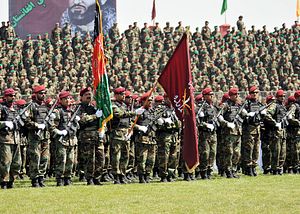Over the weekend, the White House announced that it would scrap plans to cut the U.S. presence in Afghanistan this year, leaving about 9,800 troops in the country well into 2016.
While that news may not come as a surprise, it could be a boon to the Pentagon’s efforts to train and equip Afghan National Security Forces (ANSF) for the fight ahead. When he visited Afghanistan last month, just days after taking office, Secretary of Defense Ashton Carter called training “the heart” of the U.S. mission in the country. President Obama has pledged to bring home the entirety of troops left in the country by the end of his term, with the exception of a contingent guarding the U.S. embassy. Even with a decelerated timeline in place, that leaves precious little time to get Afghan troops prepared.
Carter has pushed for the move, with the hopes of buying more time to train Afghan troops, particularly in light of offensives in Kandahar and Helmand provinces. He’s also left the door open for talks with the Taliban as a means to deal with the conflict, extending upon the legacy of his predecessor, Chuck Hagel.
So how successful has training been so far? Our own Franz-Stefan Gady was impressed by the professionalism of the Afghan National Security Forces when he was embedded with a unit in eastern Afghanistan two years ago. Indeed, the U.S. has already turned over more than 400 bases used in the NATO mission to the ANSF, but political leadership has lagged: President Obama urged his newly elected Afghan counterpart, Ashraf Ghani, to accelerate the formation of his coalition government, which has failed to impress the Afghan legislature. Obama will host Ghani at the White House on March 24, and will hope to see some progress by then.
They’d do well to hurry that process up. Violence continues to persist in Afghanistan: in 2014, the Red Cross reported that the number of wounded combatants transported from the battlefield rose by 37 percent over the previous year. There are serious questions about Afghanistan’s ability to take the fight to the Taliban and other militant groups – the ANSF will be without close fixed-wing air support as the summer fighting season heats up, and there are questions about whether the military will be able to absorb and maintain donations from the Pentagon, like C-130H transportation aircraft, which could prove too complex and costly for Kabul in the long-term.
Even Carter might concede that a graduated timeline for the United States’ withdrawal will not solve all of these problems. The U.S. has already spent some $65 billion in training and equipping the ANSF, and the force is still plagued by attrition. What is needed to retain those troops is a strong and united political leadership in Kabul. With Ghani now six months into the presidency, we’re still waiting to see if that’s in the cards for Afghanistan.
































